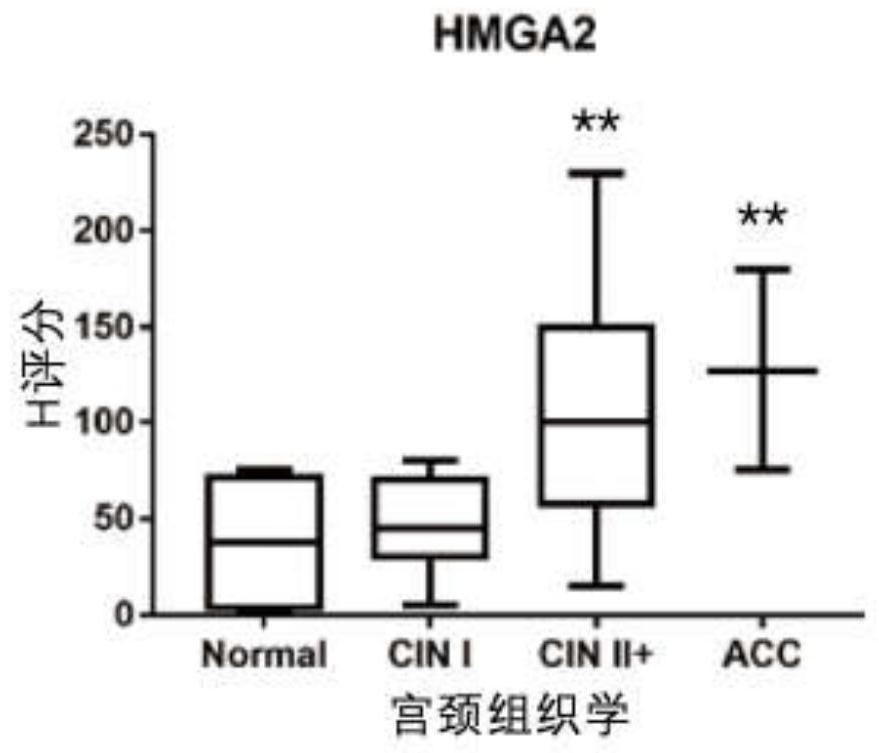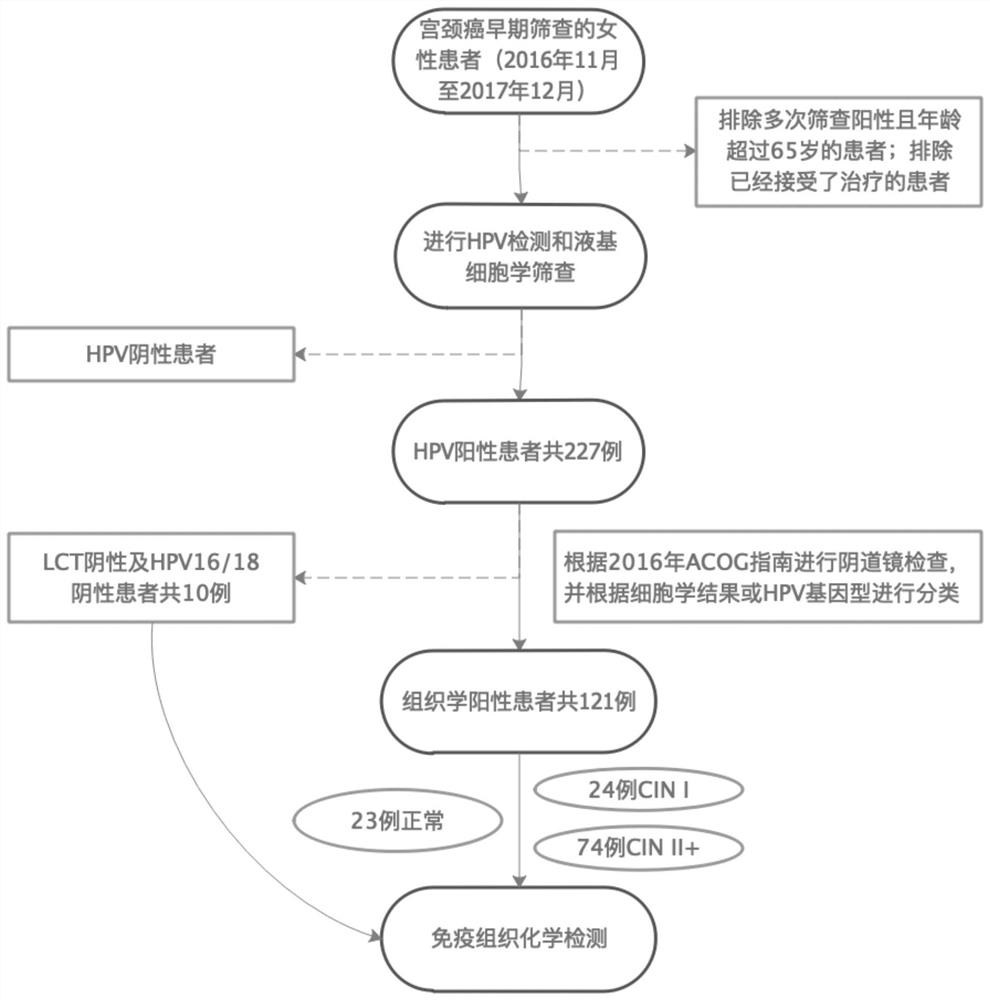CRISPR/Lbcpf1 gene editing system and application thereof
A gene editing and gene silencing technology, applied in the fields of bioengineering and biomedicine, which can solve problems such as toxic side effects, treatment obstacles, and unbearable patients.
- Summary
- Abstract
- Description
- Claims
- Application Information
AI Technical Summary
Problems solved by technology
Method used
Image
Examples
Embodiment 1
[0032] Embodiment 1: Immunohistochemical technique detects the expression of HMGA2 protein in different tissue samples
[0033] In this embodiment, the expression of HMGA2 protein in different tissue samples was detected by histology chip.
[0034] Select the tissue samples of different degrees of cervical lesions in the histological chips CIN481 and CIN1201 listed in Table 1 (the histological chips CR501 and BC10025 are used as controls) (according to the degree of lesions from mild to severe, they are divided into: normal or inflammatory, CIN I, CIN II, CIN III, SCC, ACC) paraffin sections were detected by immunohistochemistry to detect the expression of HMGA2 protein.
[0035] Table 1: Histological information in histology chips CIN481, CIN1201, CR501 and BC10025
[0036]
[0037]
[0038] *Severity of Cervical Intraepithelial Neoplasia (CIN)
[0039] Select paraffin sections of tissue samples with different degrees of cervical lesions in the above-mentioned histolo...
Embodiment 2
[0052] Embodiment 2: Immunocytochemical technique detects the expression of HMGA2 protein in different cell samples
[0053] The cell samples used in this example were from HPV-positive patients undergoing cervical cancer screening in the First Affiliated Hospital of Sun Yat-sen University from November 2016 to December 2017. Such as image 3 As shown, the obtaining process of the cell sample adopted in this embodiment is shown: the patient accepts HPV (detecting whether to be infected with human papillomavirus) and LCT (cervical lesion cytology detection) detection at the same time, or they have a sample from another authoritative medical institution HPV test results. Exclusion criteria were women over 65 years of age, repeatedly tested or treated. 227 HPV-positive women were enrolled (approved by the Ethics Committee of the First Affiliated Hospital of Sun Yat-Sen University (No. [2016] 177)) and treated according to the 2016 American College of Obstetrics and Gynecology (...
Embodiment 3
[0068] Embodiment 3: Comparison of HMGA2 and LCT detection efficiency
[0069] According to the method of Example 2, colposcopy was performed on 227 HPV-positive patients who were screened for cervical cancer in the First Affiliated Hospital of Sun Yat-sen University from November 2016 to December 2017 (obtained from the First Affiliated Hospital of Sun Yat-sen University). Approval of the Ethics Committee (No.[2016]177)), finally obtained 77 cases of HPV detection and colposcopy fully matched cell samples, as this example using molecular biology methods (HMGA2) and using cytology detection methods (LCT ) cervical cell samples to evaluate the efficiency of HMGA2 protein or LCT as a single index to detect CIN II+ in HPV positive patients. The above 77 cell samples were made into cell smears and stored in BD SurePath LBC preservative solution (BD Diagnostics, Sparks, MD) for future use, and HMGA2 index detection and LCT index detection were respectively carried out according to ...
PUM
 Login to View More
Login to View More Abstract
Description
Claims
Application Information
 Login to View More
Login to View More - R&D
- Intellectual Property
- Life Sciences
- Materials
- Tech Scout
- Unparalleled Data Quality
- Higher Quality Content
- 60% Fewer Hallucinations
Browse by: Latest US Patents, China's latest patents, Technical Efficacy Thesaurus, Application Domain, Technology Topic, Popular Technical Reports.
© 2025 PatSnap. All rights reserved.Legal|Privacy policy|Modern Slavery Act Transparency Statement|Sitemap|About US| Contact US: help@patsnap.com



